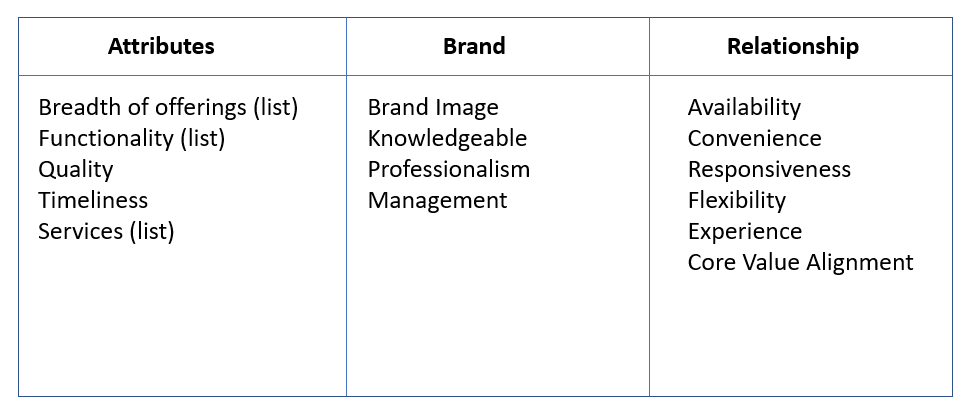Previous posts have discussed the concept of strategy:
- A definition of strategy
- Why you should have a strategy
- How to develop a strategy and
- If you should change your strategy
This post digs into the heart of your strategy, your value proposition.
Cespedes, put’s is this way, “will we sell it for more or make it for less — and allocate sales resources accordingly?”
We’ve already said, that the “make it for less” or the cost strategy becomes increasingly harder over time.
If you want to take the “sell it for more” approach, how do you determine which strategic moves to make?
Define your value proposition. Said another way, define what your customers really value. NOT what you think they value.
Norton and Kaplan (creators of the balanced scorecard) offer a framework to help define what your customers value by grouping value into three broad categories – attributes, image, or relationship.

This is where the work comes in.
Ask your top 20 customers what they value, presenting them with the categories above and maybe a blank question (in case you missed something).
Break down the functionalities of your product or offerings into individual options.
Ask your team the same question.
When complete, you’ll have a list of areas (activities) that represent your value proposition – straight from your customers.
In the next blog post, we’ll talk about what to do with this information. As always, if you need help with your strategy, contact us.